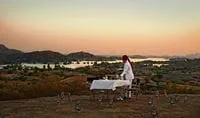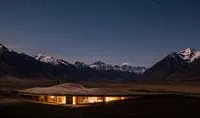Destination guide: Dubrovnik
With its location on the shores of the sparkling Adriatic, Dubrovnik is one of the world’s most beautiful walled cities. Indeed, George Bernard Shaw wrote of it “Those who seek paradise on Earth must come to Dubrovnik”. Also known as the “Pearl of the Adriatic”, it is an UNESCO World Heritage Site with centuries of history.

Within its two kilometres of fortressed wall, it is bursting with stunning architecture, spectacular churches, fountains, palaces and gardens. Outside the city walls, you’ll find beautiful Renaissance parks full of bougainvillea, orange and lemon groves, fig and palm trees and colourful Mediterranean gardens. Dubrovnik has a population of less than 50,000, and whilst it is spread along the coast, its heart is the compact Old Town.
When to go
Temperatures can get quite high on the Adriatic coast during the summer months, which is why our favourite time is April to June or late summer - September to October. The days are warm and sunny, and the sea is warm enough to swim in. All the attractions are open and restaurants are easier to get into, and there won’t be crowds of people. For visiting Dubrovnik Old Town, it’s usually best to get there early to avoid the cruise ship passengers, although if you venture off the beaten track, the streets won’t be so busy. A lot of the main attractions open at 8am, which is useful if you like a bit more space and peace. Throughout the Old Town the street cafés are full of locals, and there’s a buzz that continues well into the night.
Activities
The beaches along the Dalmatian coast, and around the islands, are some of the finest in the Mediterranean. Towns and villages along the coast have their own beaches favoured by the locals, and Dubrovnik is no different. The waters are warm, calm and crystal clear with gentle slopes into the water, making them very family friendly. The local favourite is Banje Beach, a well located pebble beach, near the Old Town. There's a part with an entrance fee, but also a public part which is always livelier and more relaxed. The beach affords fabulous views of the city walls and the island of Lokrum across the Bay. Overlooking Sumratin Bay, the pebbled Lapad Beaches are at the end of a long promenade of cafés and restaurants, with a backdrop of shady trees and views towards the nearby Elaphiti Islands. Fifteen minutes from the Old Town, on the north side of the Lapad Peninsula, is Copacabana Beach. This is ideal for water sports enthusiasts with water-skiing, surfing, banana rides and kayaking.
Given the history of Dubrovnik, there is no shortage of things to do and see during your stay, and to really do it justice, it’s a good idea to hire a guide, who’ll be able to tell you things you won’t find in a guide book. Timmy was our guide when we recently visited. He’d grown up in Dubrovnik, so gave us a real authentic flavour to the city.
Formerly the main defence for the city, the walls and fortifications are now a major attraction, and visitors can walk their length. In some places, they reach a height of 25m, and the views of the Old Town are simply amazing. Built between the 14th and 17th centuries to defend Dubrovnik from various invaders, including the Venetians and the Ottomans, the walls were considered to be impregnable. Four main forts at strategic points include the circular Minceta Tower, the Revelin Fortress, Fort Bokar, the St Lawrence Fortress and the St John Fortress. Each fortress is individual in design, and worth visiting in its own right. On the ground floor of the St John Fortress there is an aquarium, whilst the Minceta Fort is one of the most beautiful cultural attractions in Dubrovnik. It’s advisable to go early, as during the summer it can be very hot walking round the walls.
In the Old Town alone, there are 80 churches, but we don’t suggest visiting them all! The Cathedral of the Assumption of the Virgin Mary is an impressive building and legend says that it was built with money donated by Richard the Lionheart. Many of these buildings are a mix of medieval and baroque architecture, with the Church of St Ignatius being modelled on the Spanish Steps in Rome.
To glean a good sense of the city’s history, there is a multitude of museums. It might take you several days and some very tired feet to visit them all, so just one or maybe two would suffice! The Maritime Museum in St John Fortress is one of the city’s most important museums, whilst the Dubrovnik Natural History Museum has some quite extraordinary 100 year old taxidermy specimens. Visitors can take a virtual reality tour of the history and culture of the city and Croatia at the Visia Dubrovnik 5D Theatrum.
There is no shortage of historical buildings to visit to give you a feel for the history and culture of Dubrovnik. The magnificent Bell Tower, near the Ploče entrance to the city, houses the famous Zelenci – bronze statues which strike the huge bell every hour. The Sponza Palace is one of the few buildings to survive the 1667 earthquake, with its ornate gothic renaissance architecture. The steps of Onofrio’s Fountain are a popular meeting place for locals, but can get quite touristy. Alternatively, if you just like to wander and soak up the atmosphere, head for the Stradun, the main street in the Old Town and find a café from which to watch the world go by. Stroll through the narrow alleys and maybe catch a street performance, or pass by some local monks. You won’t fail to be amazed at the beauty of the city, as well as how clean it is. If you’re visiting between July and August, you’re bound to see one of the many events that take place during the Dubrovnik Summer Festival – a whole host of cultural activities including street theatre and concerts. The main winter festival is the Feast of St Blaise on 03 February, where the patron saint of the city is honoured by a parade and a special mass, followed by a lot of celebrating, eating and drinking.
For some truly spectacular views of the city and the surrounding coastline, take the trip up to the summit of Mount Srd. There’s a fortress on top with a small museum on its history, and there are several ways to get there. The quickest way is to drive, and the most energetic is to walk. It takes about an hour and a half, and you’ll need a good pair walking shoes! We recommend taking the cable car from Down station – at four minutes, quite the quickest way, and definitely the most fun!
Cuisine
As Croatia’s history has encompassed many cultures, it is no surprise that this is reflected in its cuisine. Mainland cuisine is different from that on the coast, having more Hungarian, Austrian and Turkish influences, whilst on the coast you’ll find more southern Mediterranean ingredients and a prominence of seafood, with Greek, Italian and French flavours. Each region has its own culinary traditions, although many dishes can be found across the country, with subtle local differences and charcuterie being a common theme. The variety of the fish on the coast is amazing, with John Dory, sea bass and bream featuring on many menus, and you’ll quite often be shown the catch of the day before it’s cooked.
Croatians eat out in “restorans” or “konobas” and “gostionas” (taverns). Their main meal tends to be lunch (ručak), rather than dinner (večera), and they eat much later in the day. When eating out, you’ll often find “marende” or “gableci” on the menu. These are a brunch type snack, which can often easily see you through to dinner. Try “ćevapi” (rissoles of minced beef, pork or lamb), “ražnijići” (shish kebab) or “pljeskavica” (similar to a hamburger), all of which are often served in a lepinja – a flat bread bun. You’ll also find that every town has a pizzeria or two, with some delicious thin crust pizzas. If you’re self-catering, most basic ingredients can be found in supermarkets, whilst all the fresh fruit, vegetables, meat and fish will come from one of the many local markets. The one in Dubrovnik is definitely worth a visit. They open early and pack up early in the afternoon, although in some more touristy areas, they may stay open later.
If you’re looking to stop off for just a drink, try a “kavana” or “kafić” – a café or bar. You'll be able to get a coffee and a pastry, and later on, a beer, a bottle of wine, or a fiery spirit! The wine industry in Croatia is developing fast, with some very good wine being produced. Istria is renowned for its dry white Malvazija, and for the tannin-rich reds Teran and Refošk. Some very good reds are to be found in Dalmatia, where Babić is a leading wine in the Primošten-Šibenik region, while Plavac mali (close to a Zinfandel) is mainly found on the south Dalmatian islands and the Pelješac peninsula. The Plavac wines from Pelješac’s Dingač and Postup vineyards are among Croatia’s finest reds, and command the highest prices. The island of Korčula is home to the excellent light whites Pošip and Rukatac. When buying wine in a supermarket, it’s useful to understand the labels. “Stolno” is table wine, “kvalitetno” is good quality, and “vrhunsko” is the highest quality. The locals quite often serve wine with sparkling water, or sometimes, coca cola.
History
During Medieval times, Dubrovnik rivalled Venice as a city state and was Croatia’s centre for the arts, literature, the sciences and most importantly, trade. A devastating earthquake in 1667 destroyed much of the town, with Baroque architecture taking its place as it was rebuilt. Not much changed until 1991 when Dubrovnik was heavily bombed over four years during the War of Independence. Pretty much all of the damage has now been repaired, although if you look carefully, evidence still remains.
Why Scott Dunn?
Unique to You

- We listen to your travel goals and craft unique trips that are bespoke to you.
- We’re with you every step of your life’s travel journey, from honeymoons to family trips and beyond.
Seamless Service

- Global offices in the UK, US, and Singapore for 24/7 seamless service.
- We offer flexibility if your plans change so you can book with confidence and peace of mind.
Carefully Curated Collection

- We’ve curated an elevated collection of accommodation, experiences, and guides.
- Committed to fostering close global relationships to continue bringing you unique experiences.
Luxury in Every Sense

- We deliver a sense of luxury that matters most to you.
- Awarded Condé Nast Traveller’s Top Travel Specialists in the World 12 years in a row.

